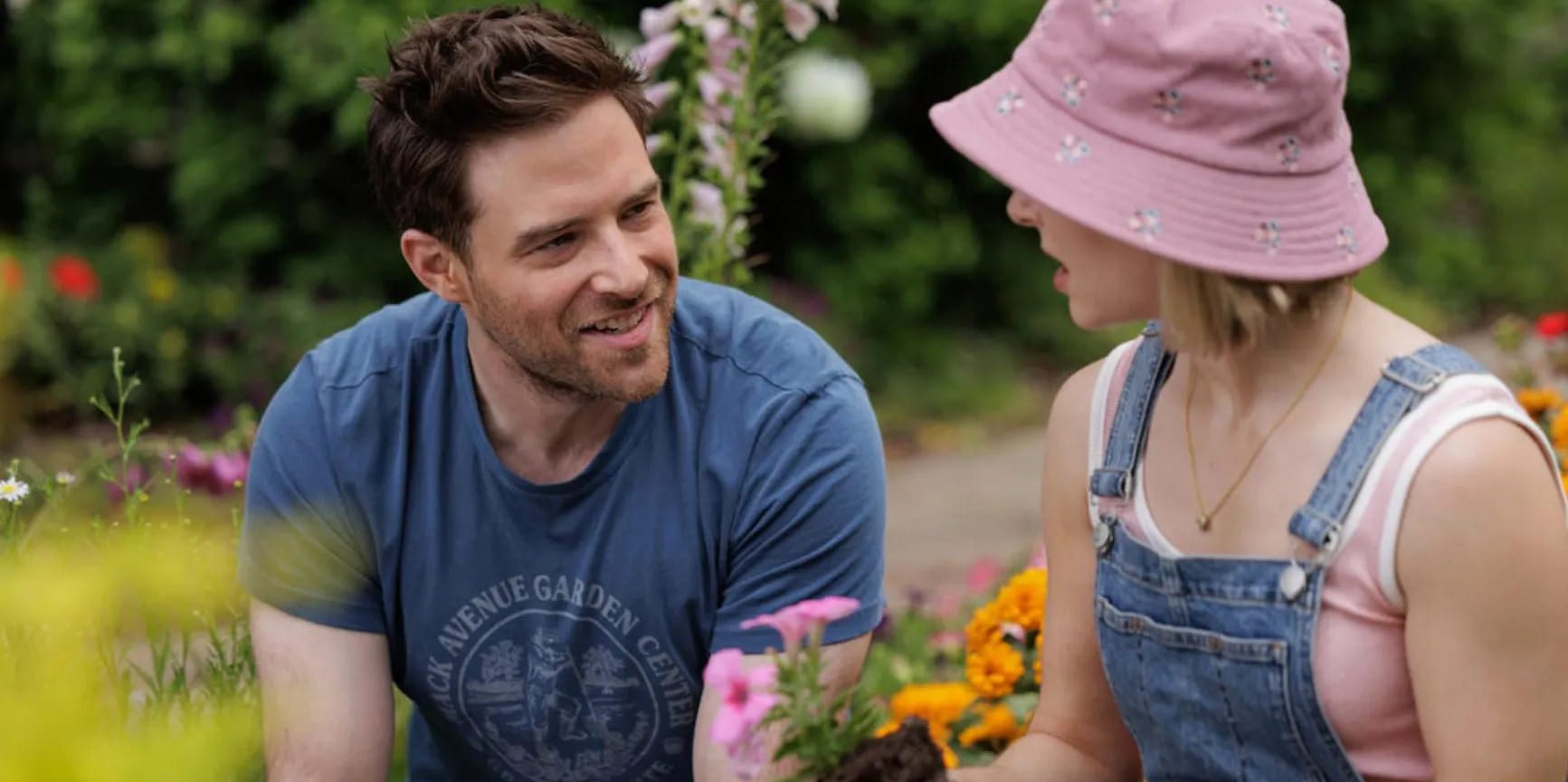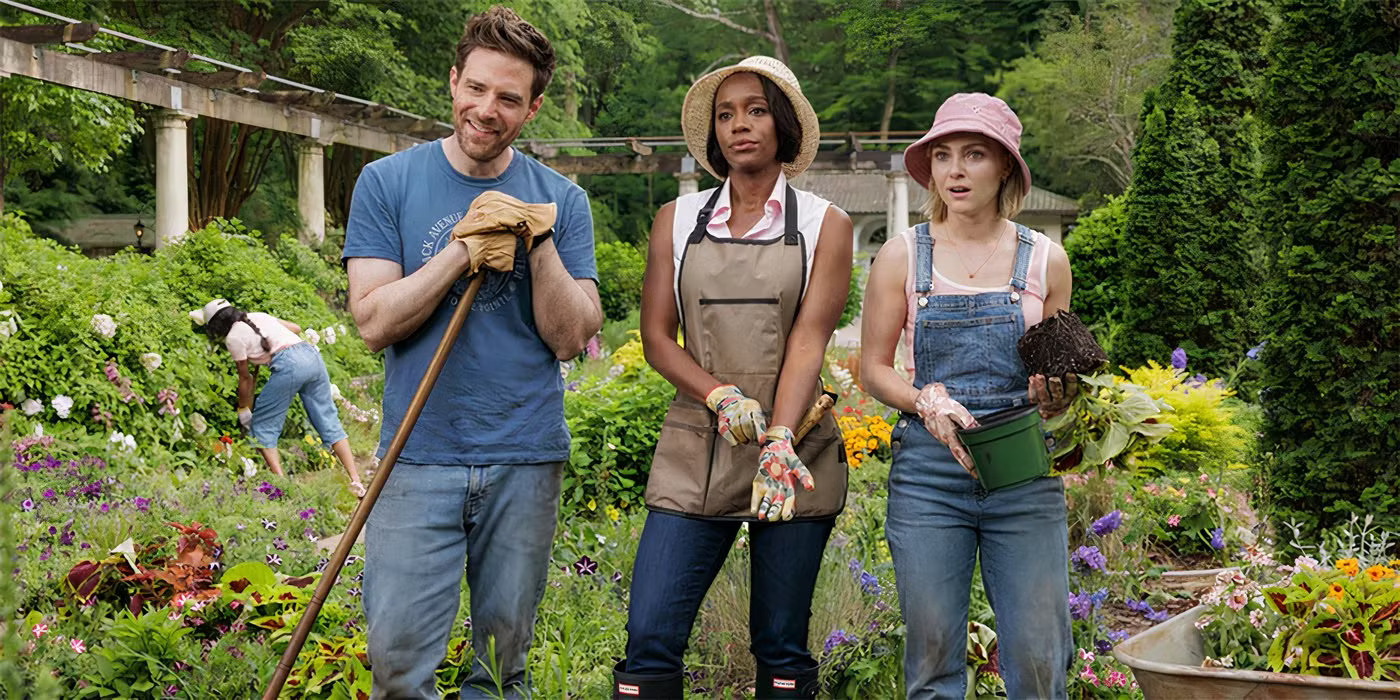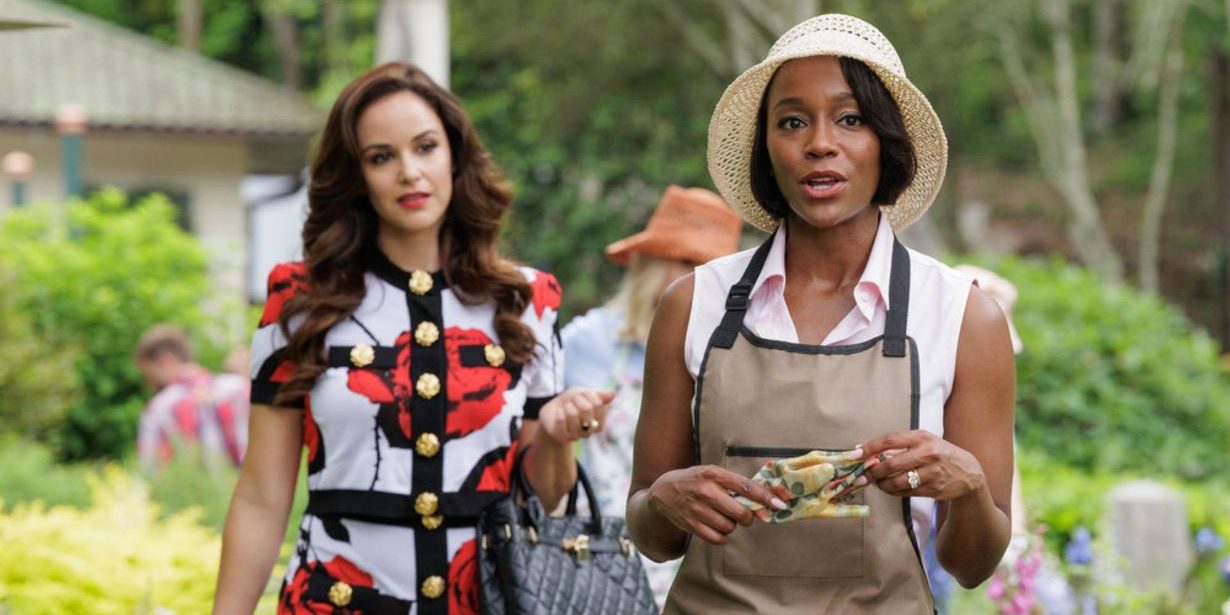NBC’s ‘Grosse Pointe Garden Society’ delves into the dark side of suburban life through a gardening club known as the Grosse Pointe Garden Society. Created by Jenna Bans and Bill Krebs, the crime drama show delves into the lives of four members of the club, namely Alice, Birdie, Brett, and Catherine, who get entangled in a mysterious murder that forces them to work together. Each character faces challenges in their personal lives, which contributes to the secrets lurking within their community. However, over time, a web of conspiracy emerges, one tied to the neighborhood’s residents and their obsession with crafting a perfect facade for the outside world. It tackles themes of crime, internal politics, societal expectations, and personal growth.
Grosse Pointe Garden Society Uncovers the Facades of Suburban Life
‘Grosse Pointe Garden Society’ is a fictional story written by Bill Krebs and Jenna Bans. The show essentially peels back the layers of suburban life and the drama unfurling underneath the exterior of politeness and posh outlooks. For Krebs, the subject matter was close to heart as he lived in Grosse Pointe. His stepmother would actively take part in the garden tours that were so popular in Grosse Pointe’s social environment, recognizing the many facets that go into such a lifestyle. He was intrigued by the opulence on display in each house, showcasing how individuals often wrapped themselves in finery within the community. Intriguingly, his late father also had a gardening hobby, which added another source of inspiration when he and Bans started developing the script.

The show pulls a unique spin on the thriller genre by navigating two different timelines. The first one focuses on the four central characters hiding a murderous secret by burying a body in the gardening club’s grounds. Meanwhile, the second takes place six months before the dark incident, delving into their lives prior to the escalation of violence. It provides a nice entry point into the drama unfolding within the community and the numerous secrets hiding between the weeds. The show carefully treads the line between a bleak murder mystery and a slightly comedic tale. It allows the writers to showcase different sides to their world, both through their characters and events. This internal battle rages at the heart of the narrative, which focuses on the duplicitous nature of suburbia. At times, the show even draws comparisons with ‘Desperate Housewives’ and ‘Good Girls.’
In an interview, Bans explained, “It’s really fun because there are endless satire opportunities in suburbia, and it’s also where the most dramatic things always happen.” He added that in suburban stories, it is always plausible to depict people having dual lives; one presents a lighter version, and the other hides sinister secrets. The show captures this by diving into adulterous relationships, jealous husbands, lies, and betrayal. By mining these core themes, the writers are able to capture a story brimming with tension, conflict, and drama. To that end, the specific events depicted may be fictional. However, a lot of the context and added emotional layers lead to a more realistic picture of trying to live in a dark suburban existence. It may be over the top in moments but rooted in real-life themes.
Grosse Pointe Garden Society Opens a Discussion on Class Struggle
Another underlying aspect of ‘Grosse Pointe Garden Society’ is its depiction of classism. Although it is far from the Victorian era tales of aristocrats towering over the middle class, the NBC show depicts a different type of class system – one where the upper middle class reigns over its lower-rung counterparts. This internal fighting between people of different social standing leads to a complex story with interconnected drama. As the entire story takes place in a small community, each resident has ties to another. Every person considers even far-off people as their neighbors, creating a sense of co-dependency that limits any sense of individual expression. When characters try to stand their ground and break from the pack, they are swiftly brought to the ground by those who wield the power.

However, the same in-fighting also leads to some unique connections between people. For instance, despite being a highly publicized socialite, Birdie interacts with her fellow community members at the same level as she might with any other person. As everyone belongs to the same group/gardening club, they have to maintain a sense of decency and camaraderie, at least on the surface. “We loved that being the intersection for this garden society … wealthy people mingling with working class,” Bill Krebs stated. The different types of exchanges showcase the dynamics within the suburb beyond the surface-level stuff. It displays people for who they are and their value system in a place that is often constrictive and demands everyone to fall into line like a herd.
Grosse Point Garden Society is a Fictional Club Vaguely Inspired By Real-Life Elements
The central aspect of ‘Grosse Pointe Garden Society’ is the titular gardening club where members of the community engage in their gardening hobby. Although it plays a vital role in the series, it is a fictional club conceived by the show’s writers, Bill Krebs and Jenna Bans. The garden is said to be based in the remote neighborhood of Grosse Pointe, a real-life community in Michigan. Intriguingly, Grosse Pointe is home to the Grosse Pointe Garden Center, a non-profit organization dedicated to helping conservation and gardening efforts in the surrounding regions. It is likely that the fictional club depicted in the show is a stand-in for the true-life garden center. As mentioned before, Krebs used his experiences as a resident of Grosse Pointe to help bring authenticity to the narrative, which most likely extended to the portrayal of the garden society.

While describing the club’s thematic value, Bans said, “I think the garden is a perfect metaphor for our show, where it’s beautiful and lush and fragrant aboveground. And underground, it’s a little darker and sexier and edgier, and that’s what our show is.” By delving into the Grosse Pointe neighborhood, the writers were able to create a locale and community that felt exactly like its real-life spot, except with a heightened tone and tense environment. They were particularly drawn to the remote and isolated nature of the region and how it has held on to its “old world value system” even after years. This is channeled into being through the interactions that take place between members of the gardening club; each caught up in their own selfish struggle.
Although the club itself is made to resemble Grosse Pointe’s pristine gardening hubs, the show is actually filmed elsewhere. The production crew records key scenes for their narrative in the neighborhoods of Atlanta, Georgia. The choice was reportedly made due to Georgia’s film tax incentives, which are lucrative for aspiring filmmakers and producers. The show is also shot in the Druid Hills neighborhood, which is part of DeKalb County in Georgia. Many of these regions present a similar tone and aesthetic to Grosse Pointe, including its lush and heavenly fictional gardening club. It plays an important role throughout the narrative, especially as the murder mystery and personal drama intertwine with each passing episode.
Read More: Grosse Pointe Garden Society Episode 1 Recap: Pilot


